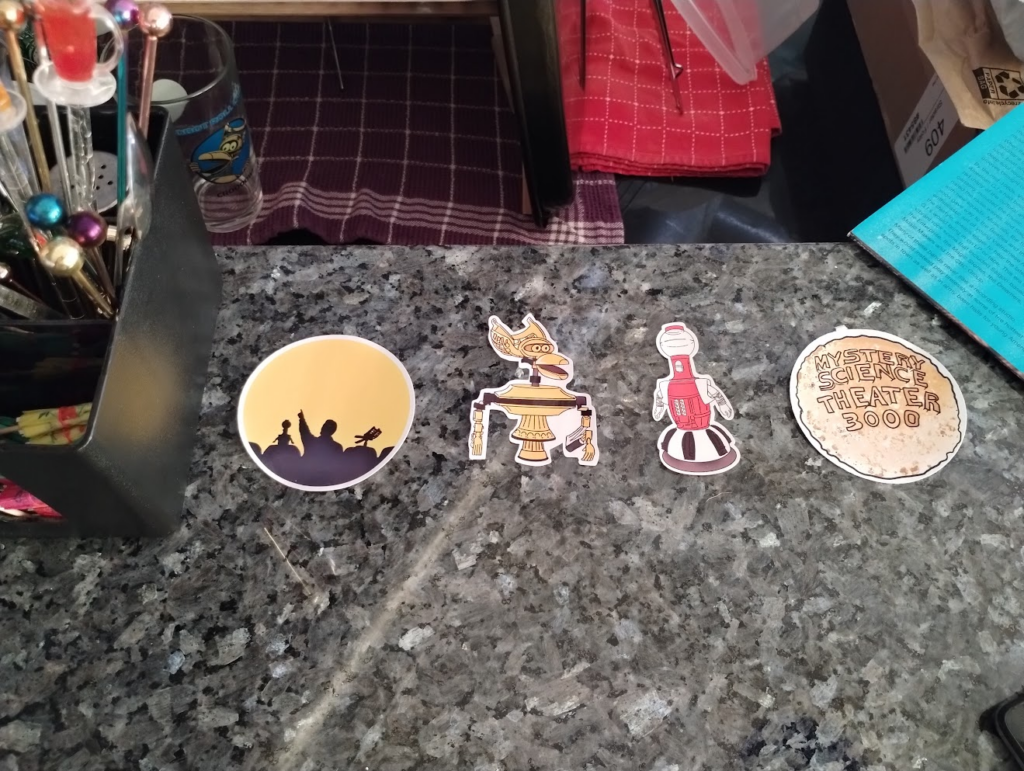I missed the one year anniversary of beginning work on the piece. I’m not sure how to feel.
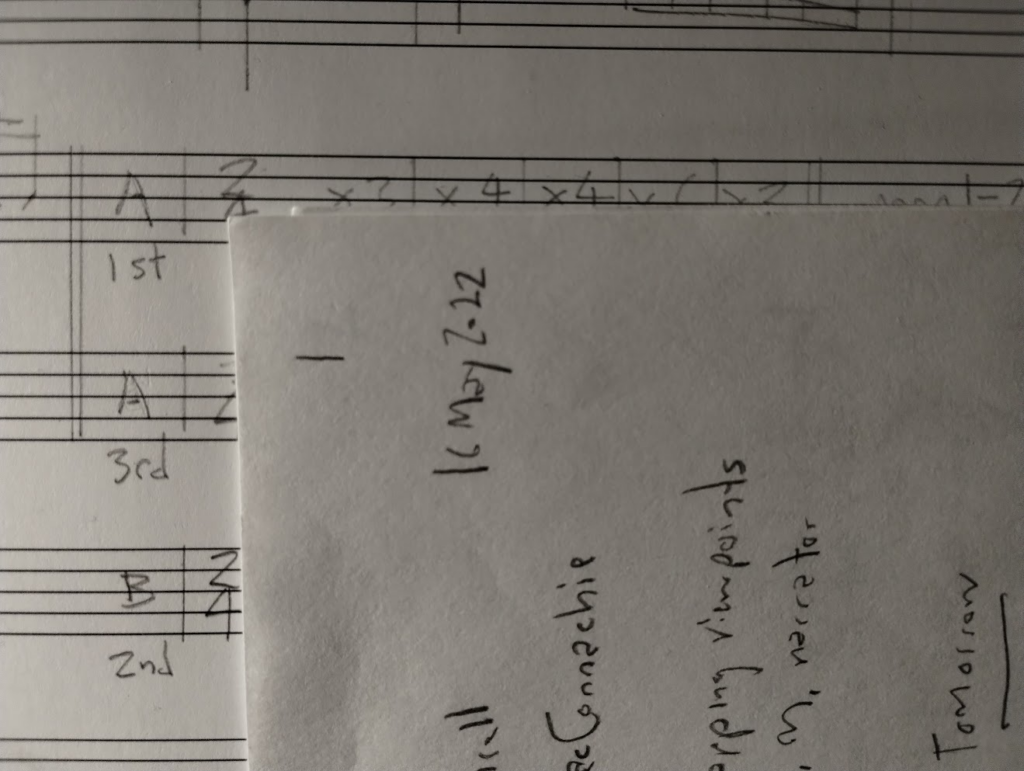
I’ve definitely been stressed about possibly losing interest since it’s taking longer than anything I’ve worked on previously. And yet I’m not losing interest because the book has not lost any meaning, and when I take the time to listen to what I have so far I’m generally happy. (Ok, so Ballade had a long period of abandonment for whatever reason I honestly don’t remember but it was exactly around the time that my hand dystonia started appearing and affecting my playing so I guess I have a pretty goddamned good idea of where that abandonment came from.) I think about what I’ll work on next, but I can’t distribute energy or time across multiple projects for fear the shiny new object will take precedence the old. (Ok, so the shiny new object is a chamber ensemble with winds ((something I’m uncomfortable with)) and strings regarding, maybe, a man who has just triggered the end of the world.) Again, I’m happy with where I’m at and the stress is more thinking I should be stressed. Brains are stupid.
A few months back, based on some references in Modern Music and After, I purchased the score for Sylvano Bussotti‘s Pour clavier.
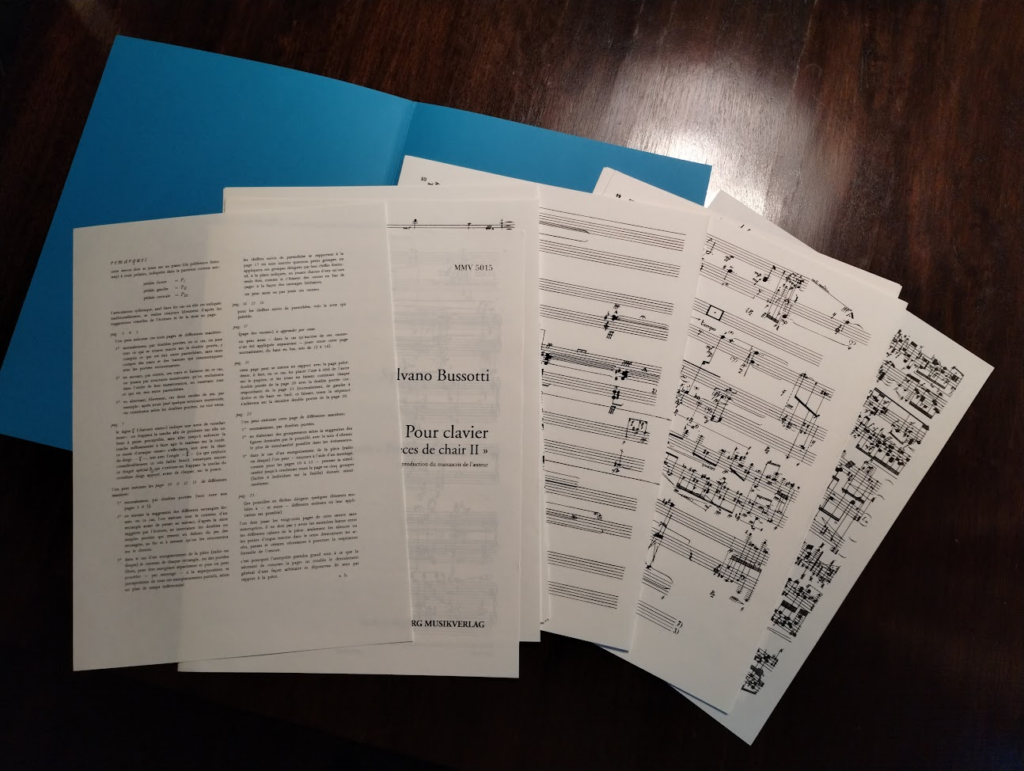
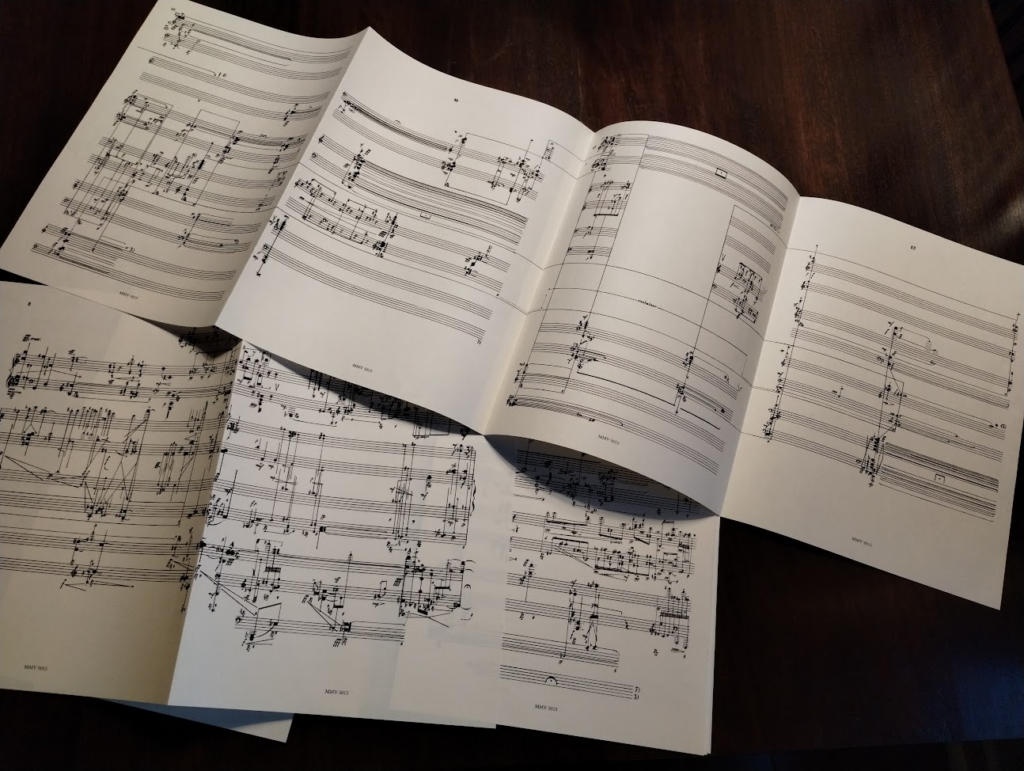
The chapter “Europe 4: Mobile Form, 1956-1962” in Paul Griffiths‘ book Modern Music and After (1995) concerns a style of composition that is a subtype of “aleatory” or “indeterminant” music. There are three types defined in Wikipedia’s entry on aleatoric music, the second of which is mobile form:
- The composer uses some form of chance to guide the composition of the work. Cage
- Sections of the score can be assembled in any order and the performer decides (this is mobile form).
- The score is notated in an indeterminate manner (e.g. graphical scores like below).
(Side bar: I still can’t believe that after I heard of his book on Twitter, purchased it, and then praised it on Twitter, he started following me. That is the definition of intimidating.)
Two examples of graphical scores:
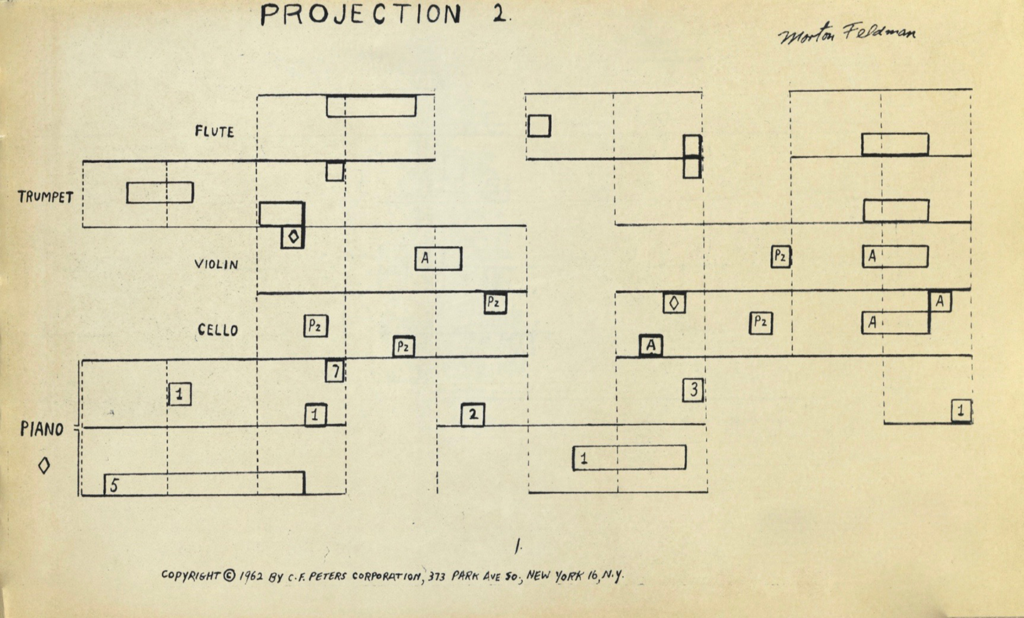
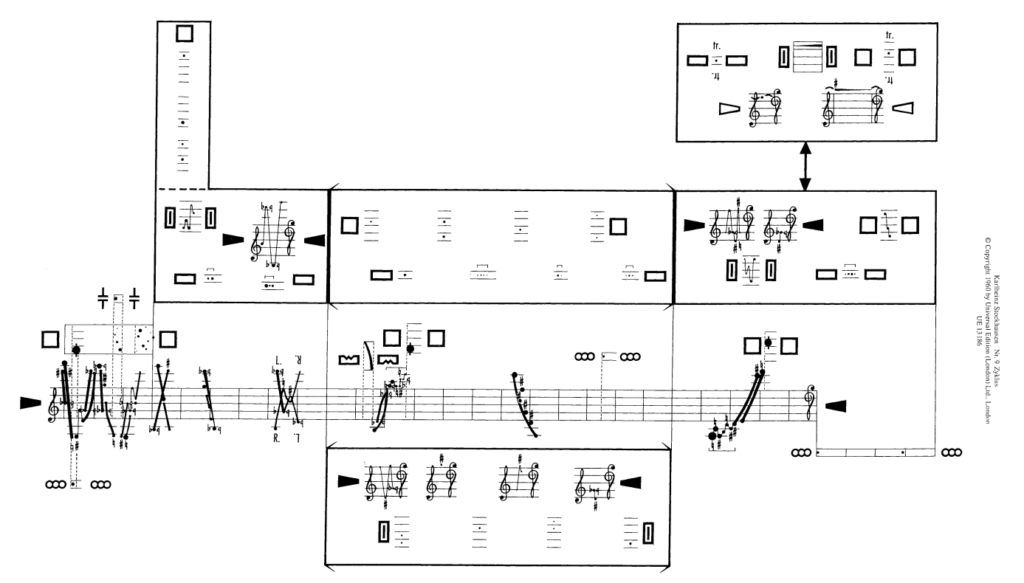
Bussotti’s Pour clavier is a hybrid of #2 and #3. There are pages that have ungrouped staffs that use barred notes extending vertically across 4 or 5 of the staffs, defying a standard grouping of left and right hand. According to Bussotti’s instructions these can be played in any number of ways: from forcing a two-staff reading to freely playing all together to playing each separately and layering as different tracks in a recording. The performance I’ve listened to (by Martine Joste) was surprisingly follow-able with just a few points where I got lost in the indeterminacy.
Back in 2014 I purchased a work by the Atlanta artist Wyatt Graff (represented by the always wonderful Kai Lin Art gallery). It consists of five Plexiglass inserts with drips and splatters of enamel paint distributed across each. The artist told me that his intention was to allow each owner rearrange the layers as they see fit. Visual art is naturally indeterminate in the first manner, but Graff’s work allows, in effect, the “performer” to choose how to assemble the components. Beyond framing and surroundings, this type of injecting the viewer into the work itself is somewhat unusual. (I haven’t chosen to rearrange, which suggests the technique in visual arts has less expressive potential.)
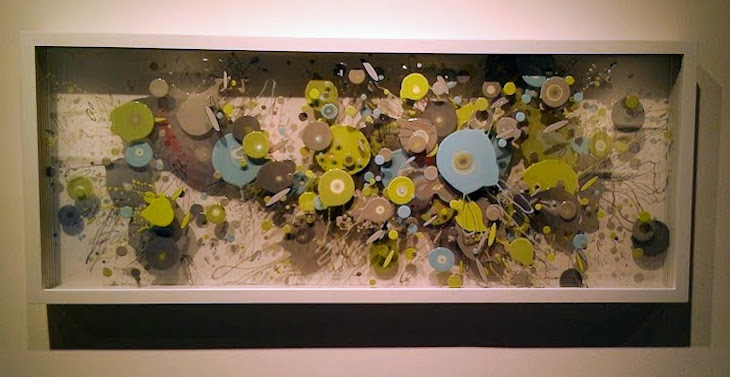
CP76, ca. 2014
enamel on layered Plexiglas
24 x 60 x 3.5 inches
In commemoration of the MST3K postscripts I used to include in my Pandemic Posts, here are the stickers I received for my otherwise nondescript luggage:
